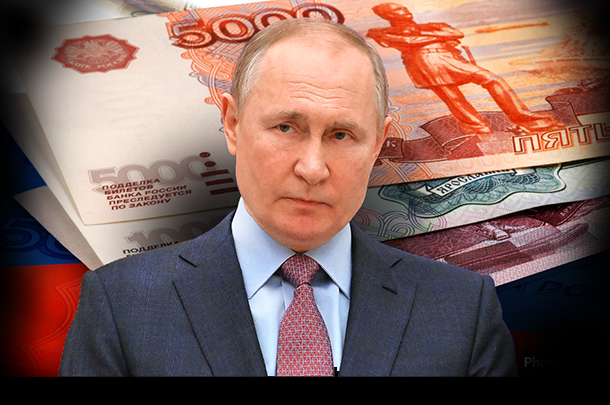
This week, we witnessed something incredible in the money markets: the value of the Russian ruble hit a two-year high against the euro. The ruble had reached an impressive 77 versus the euro – its strongest mark since early March 2020.
Despite unprecedented western sanctions against Moscow, the ruble is still defying the Atlanticist embargo, which has left many analysts now asking: is Russia winning the economic war?
How is this possible, especially after the US, EU and the collective West had ‘canceled’ Russia?
Back in late February and early March, things were not looking so good for Russia, with the ruble suffering a dramatic collapse following Russia’s full-scale invasion of neighboring Ukraine. The currency continued its freefall as sanctions took hold, as everyone seemed to be fleeing the troublesome currency.
This disaster seemed to be compounded later, due to Washington’s theft of $300 billion in Russian foreign currency reserves held in banks around the world – an unprecedented move which had prevented the Russian Central Bank’s ability to access its vast pool of foreign reserves, effectively preventing Moscow from making its scheduled payments on foreign debt and raising the prospect of an inevitable default. However, Russia appears to have made a late u-turn to avoid a default on Friday, making a series of already-overdue international debt payments in US dollars – despite previously insisting that these scheduled payments would only be paid in Russian rubles.
Here Reuters Business explains the bond payment problem and Russia’s historic spotless credit record:
Whether the money would make it to the United States and other Western countries that sanctioned Russia was still not clear, but it represented another major twist in the game of financial chicken that has developed about a possible default.
Russia’s finance ministry said it had managed to pay $564.8 million on a 2022 Eurobond and $84.4 million on a 2042 bond in dollars – the currency specified on the bonds.
The ministry said it had channeled the required funds to the London branch of Citibank, one of the so-called paying agents of the bonds whose job is to disburse them to the investors that originally lent the money to Moscow.
Russia has not had a default of any kind since a financial crash in 1998 and has not seen a major international or ‘external’ market default since the aftermath of the 1917 Bolshevik revolution.
What explains this incredible recovery? Quite simply, it’s an increase in the demand for Russian rubles, due to the canny move by Moscow by demanding that European nations pay for its energy in rubles rather than in euros or dollars. This, in turn, created a marked demand for rubles which naturally increases the value of the currency. To buttress this positive trend, Moscow is now seeking to harden its currency by pegging the ruble to gold and other stable commodities.
This is only the beginning. As the summer approaches, expect more twists and turns in this epic financial war, especially if the western fiat economies begin to collapse.
READ MORE FINANCIAL NEWS AT: 21st Century Wire Financial Files
PLEASE HELP SUPPORT OUR INDEPENDENT MEDIA PLATFORM HERE

Get Clive de Carle's Natural Health essentials of the finest quality, including vitamin & mineral supplements here.















